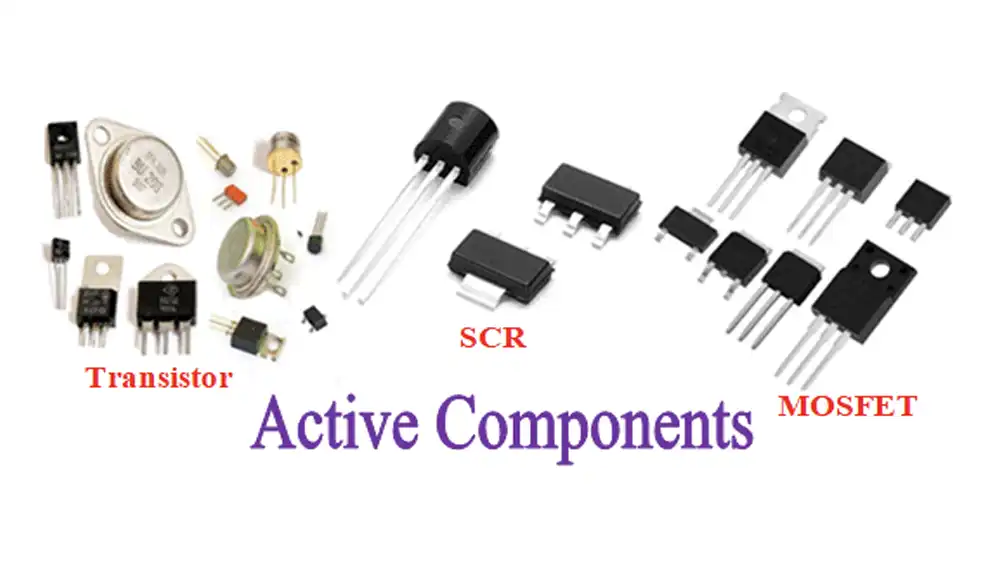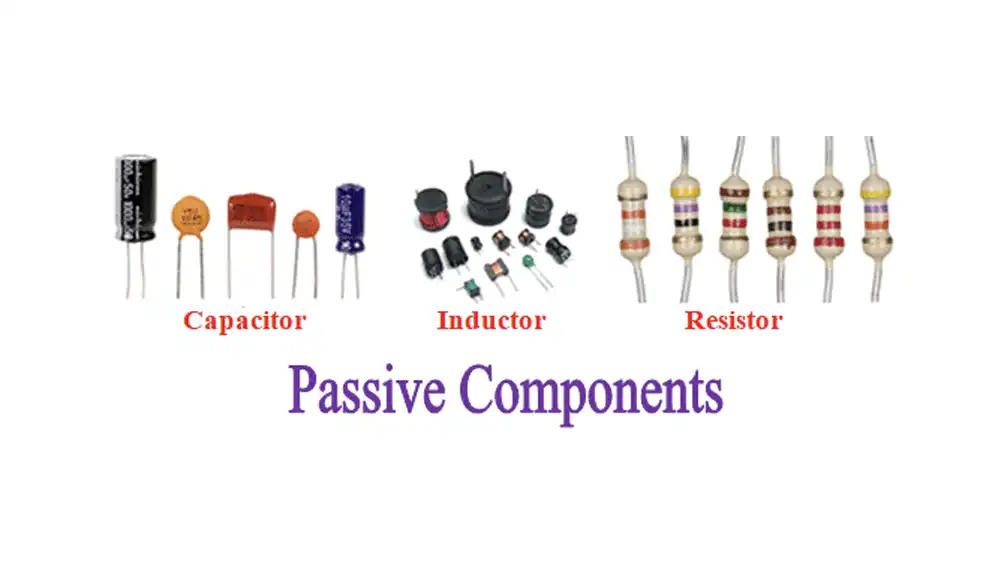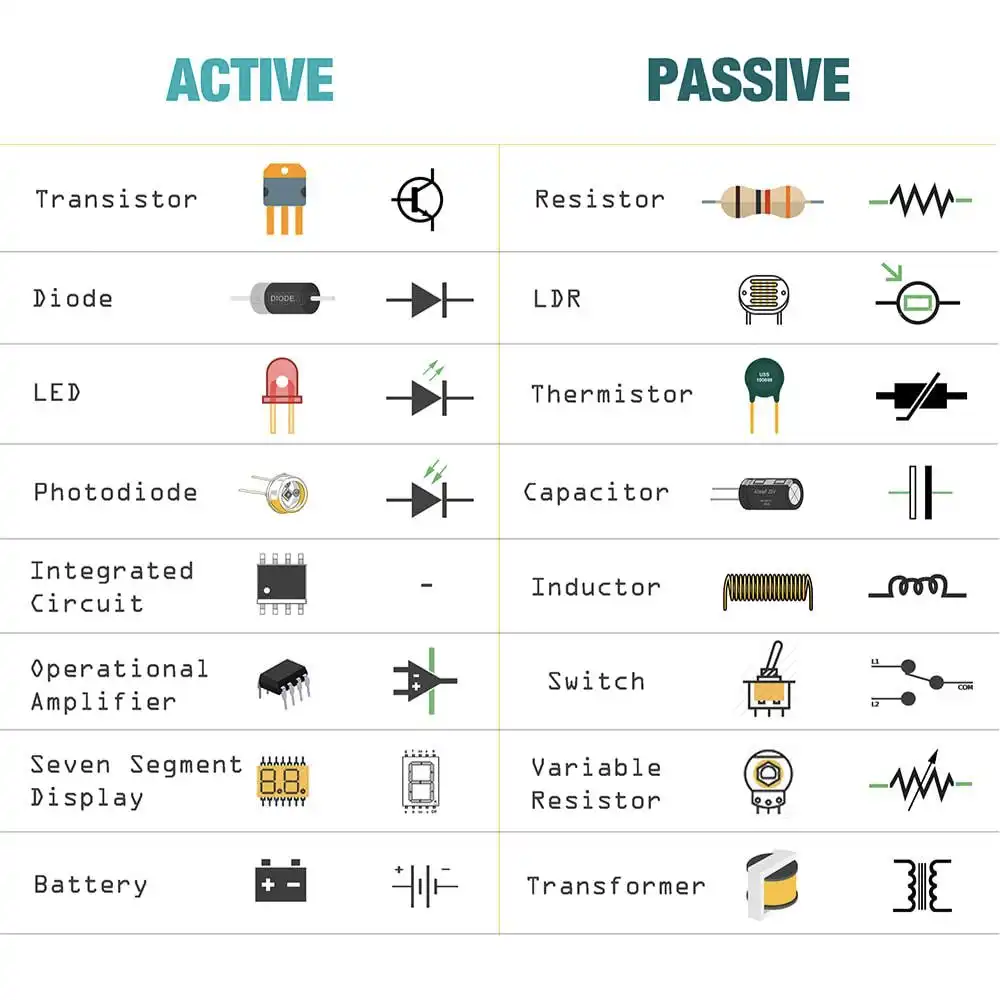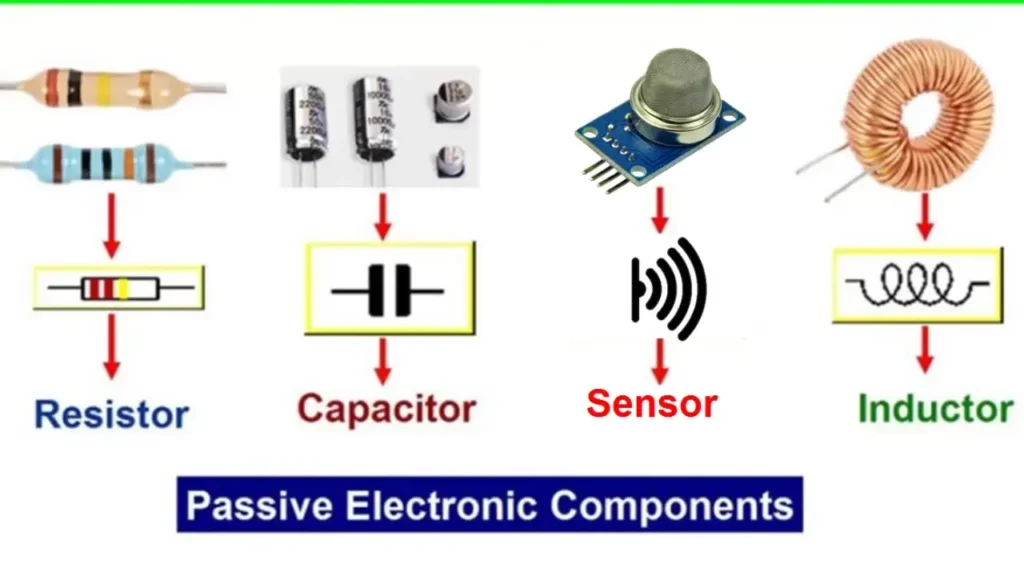In the electronic industry, active and passive components are two fundamentally important types of elements, and they can play an important role in electronic circuits.
Today we will explain the active and passive components in electronics.
What Are Active Electronic Components

Active electronic components are devices that can control the flow of electrical energy and amplify signals within a circuit.
Active electronic components examples
Active electronic components are devices that can control the flow of electrical current and typically require an external power source to function. These components are capable of amplifying, switching, or generating electrical signals.
Here are some types of active components in electronics, and some examples of active electronic components include:
- Transistors: Transistors are semiconductor devices that can amplify or switch electronic signals. They are fundamental building blocks in many electronic circuits, such as amplifiers, oscillators, and digital logic circuits.
- Integrated Circuits (ICs): Integrated circuits are complex arrangements of interconnected electronic components fabricated on a single semiconductor substrate. They can perform a wide range of functions, including amplification, signal processing, memory storage, and microcontroller operations.
- Operational Amplifiers (Op-Amps): Op-amps are specialized amplifiers with high gain and differential input capabilities. They are widely used in signal conditioning, filtering, and mathematical operations within electronic circuits.
- Diodes (when used as active components): While diodes can function as passive components in some circuits, they can also operate as active components in applications such as rectification, voltage regulation, and signal modulation.
- Triodes and Vacuum Tubes: Although less common in modern electronics, vacuum tubes and triodes were historically crucial active components in early electronic devices such as radios and televisions. They can amplify or switch electrical signals.
- Field-Effect Transistors (FETs): FETs are transistors that use an electric field to control the conductivity of a semiconductor channel. They are commonly used in amplifiers, switches, and digital circuits.
- Voltage Regulators: Voltage regulators are active components used to stabilize and control the output voltage of power supplies. They ensure that electronic devices receive a consistent and reliable power supply regardless of fluctuations in input voltage or load conditions.
These active components play vital roles in modern electronics by enabling signal processing, amplification, control, and power management within electronic systems.
What Are Passive Electronic Components

Passive electronic components are fundamental elements used in electronic circuits that do not require a power source to operate actively.
Unlike active components such as transistors or integrated circuits, passive components do not amplify or control electrical signals; instead, they modify or store electrical energy in the circuit without adding power of their own.
Passive component examples
Here are some examples of passive electronic components:
- Resistors: These are components that restrict the flow of electrical current. They come in various types, including fixed resistors, variable resistors (potentiometers), and thermistors.
- Capacitors: Capacitors store and release electrical energy. They are used for filtering, smoothing, coupling, and timing purposes in circuits. Ceramic capacitors, electrolytic capacitors, and tantalum capacitors are common types.
- Inductors: Inductors store energy in a magnetic field when current flows through them. They are used in filters, oscillators, and power supply circuits. Common types include air-core inductors, ferrite-core inductors, and toroidal inductors.
- Diodes: Diodes allow current to flow in one direction only. They are used in rectification, signal demodulation, and voltage regulation. Examples include silicon diodes, germanium diodes, and light-emitting diodes (LEDs).
- Transformers: Transformers consist of two or more coils of wire linked by a magnetic field. They are used to transfer electrical energy between circuits with different voltage or current levels. Power transformers and audio transformers are examples.
- Resonators: Resonators are used to produce or select a specific frequency of oscillation. They are commonly found in RF circuits for tuning purposes. Quartz crystals and ceramic resonators are examples.
- Potentiometers: Potentiometers are variable resistors used to adjust voltage or current manually. They are commonly used for volume controls, brightness controls, and tuning knobs in electronic devices.
These passive components play crucial roles in electronic circuits, providing functionality such as signal processing, energy storage, voltage regulation, and frequency tuning.
Active vs Passive Components in Electronics

Active and passive components are two fundamental categories of electronic components, each serving distinct roles in electronic circuits.
Here’s a comparison between active and passive components along with a table summarizing their differences:
Active Components:
Active components require an external source of power to function and control the flow of electrical energy within a circuit. They can amplify signals, generate oscillations, and perform various signal processing functions.
Examples include transistors, operational amplifiers (op-amps), integrated circuits (ICs), and vacuum tubes.
Passive Components:
Passive components do not require an external power source to operate; they modify or store electrical energy without adding power of their own. They primarily control the flow of current, voltage, or energy within a circuit.
Examples include resistors, capacitors, inductors, diodes, transformers, resonators, and potentiometers.
Differences between Active and Passive Components:
| Feature | Active Components | Passive Components |
|---|---|---|
| Power Requirement | Require an external power source to operate. | Do not require an external power source; they are powered by the signal in the circuit. |
| Ability to Amplify | Can amplify signals and perform signal processing functions. | Do not amplify signals; they modify or control electrical energy without adding power. |
| Control of Electrical Energy | Control and manipulate the flow of electrical energy. | Restrict or store electrical energy without actively controlling it. |
| Examples | Transistors, operational amplifiers, integrated circuits. | Resistors, capacitors, inductors, diodes, transformers. |
Active components actively control the flow of electrical energy and are essential for tasks such as amplification, switching, and signal processing. Passive components, on the other hand, play roles in shaping and managing electrical signals within a circuit without requiring external power.
Understanding the distinction between active and passive components is crucial for designing and analyzing electronic circuits effectively.
Are Sensors Active or Passive Components

Sensors can be considered both active and passive, depending on their specific design and operation.
Passive Sensors:
- Do not require an external power source.
- Generate a signal directly in response to the measured physical quantity.
- Examples:
- Thermocouples: Measure temperature by generating a voltage.
- Photovoltaic cells: Convert light energy directly into electrical energy.
- Piezoelectric sensors: Generate a voltage in response to mechanical stress.
Active Sensors:
- Require an external power source to operate.
- May incorporate active electronic components (like amplifiers or microcontrollers).
- Examples:
- Radar: Emits electromagnetic waves and detects their reflections.
- Ultrasonic sensors: Emit sound waves and measure the time it takes for the echo to return.
- Many modern sensors: Integrate electronics for signal processing, amplification, and communication.
Some sensors operate passively, converting the measured physical quantity directly into an electrical signal.
Others require an external power source and may incorporate active electronic components for signal processing, making them active sensors.
The distinction between active and passive sensors can sometimes be nuanced, and many sensors may fall into a gray area depending on their specific design and application.
Conclusion
In conclusion, understanding the distinction between active and passive components is crucial for comprehending the fundamental principles of electronics. Active components generate or amplify signals, while passive components interact with signals without requiring an external power source. By carefully selecting and combining these components, engineers can design a wide range of electronic circuits to perform various functions.
Ready to build your next electronics project? Explore our extensive inventory of high-quality active and passive components, including resistors, capacitors, inductors, transistors, and more.
Get electronic components today! Visit our website to browse our selection and find the perfect components for your needs.